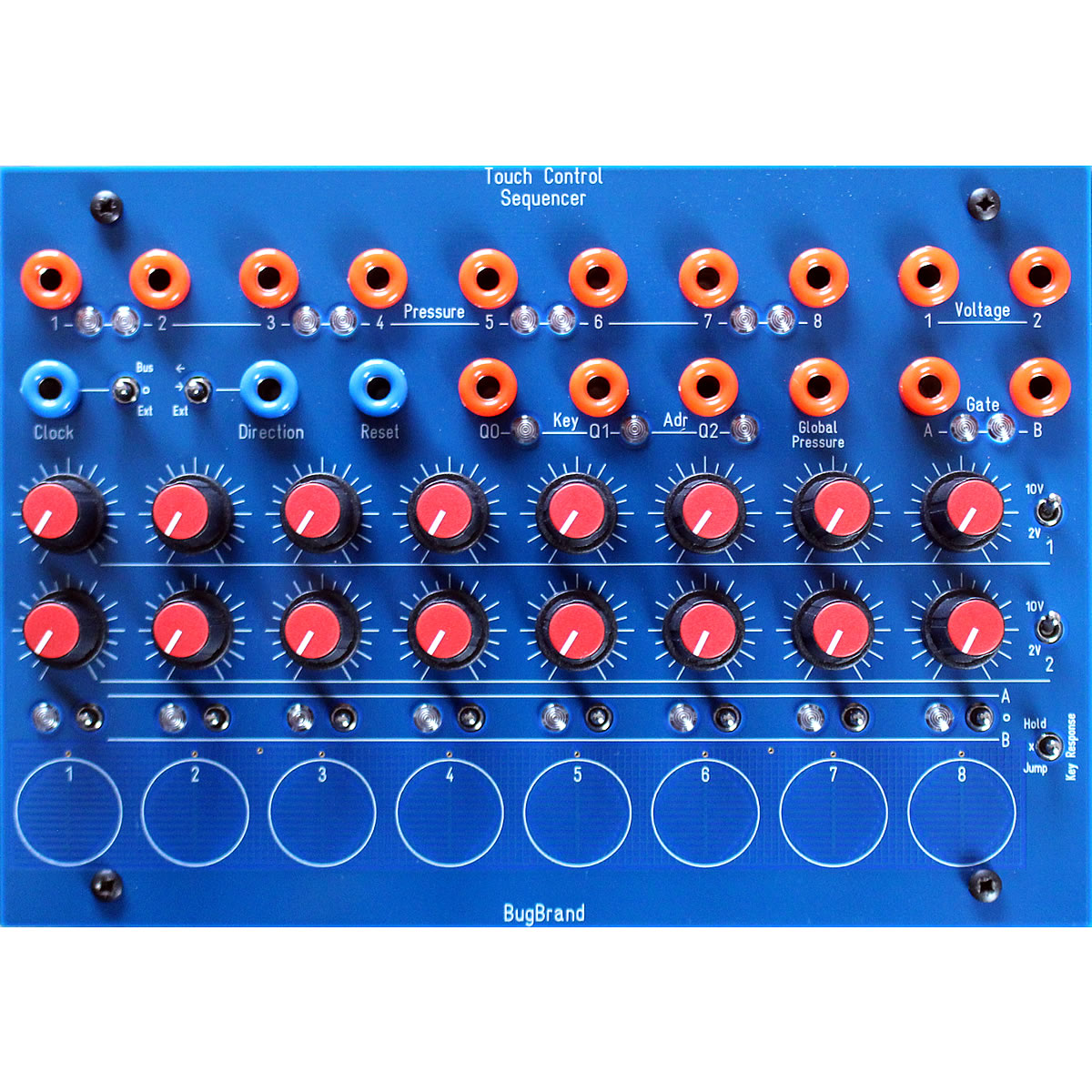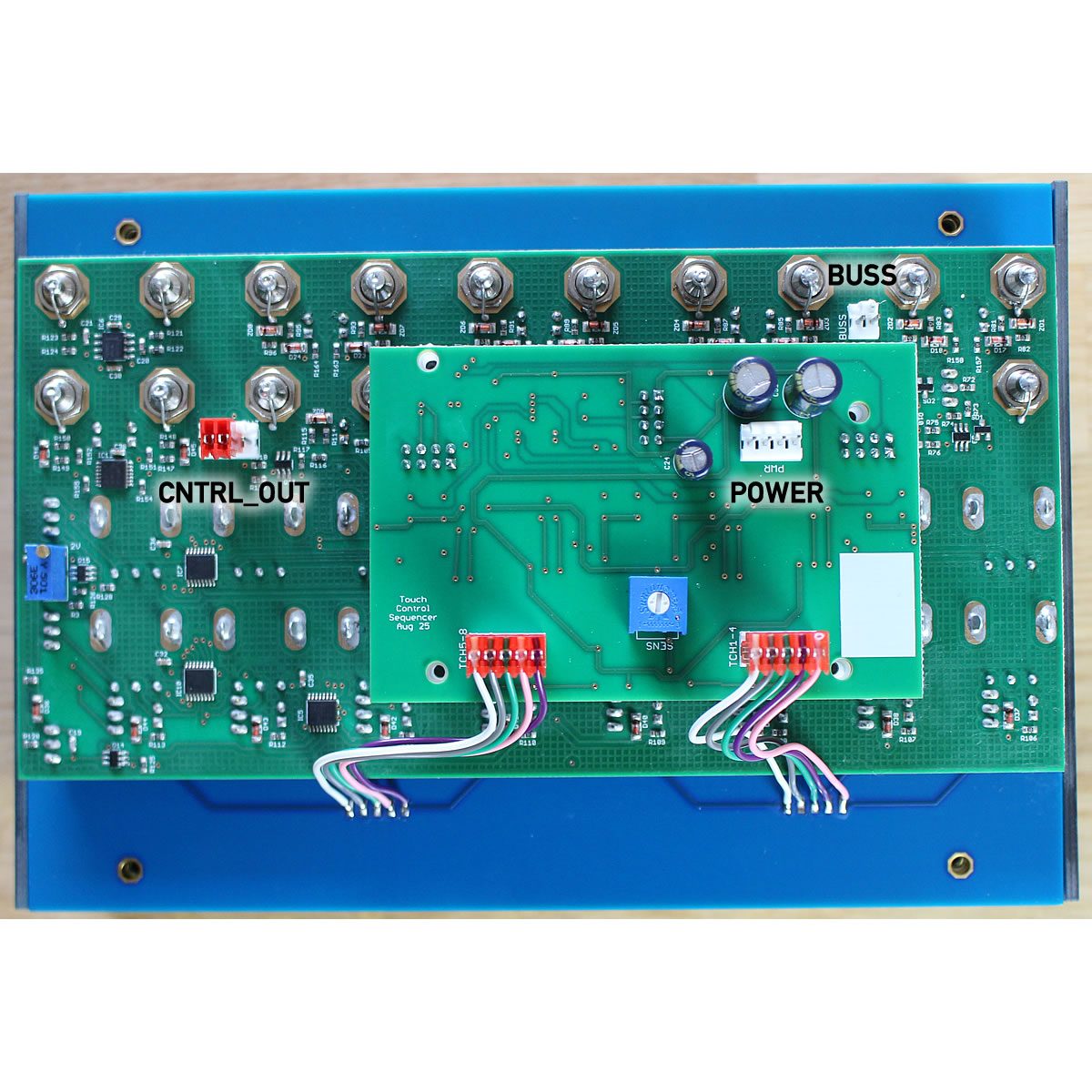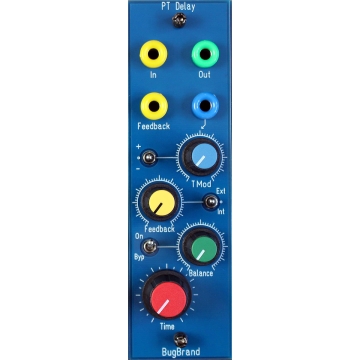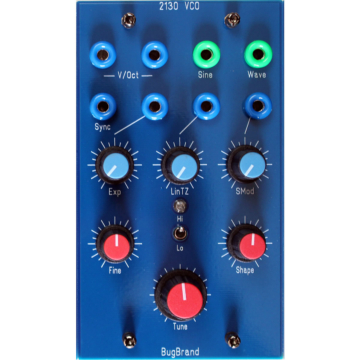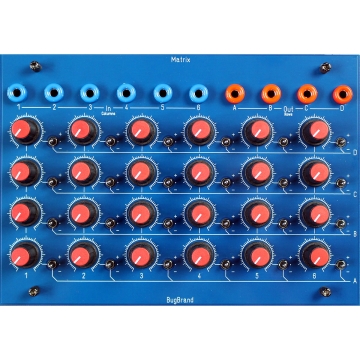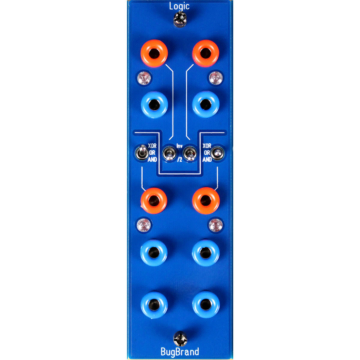Description
Back in the early days of the Old Blues, I brought out my first version of the CTL1 Touch Panel – a mixing of two designs published by Arpad Bernares (an alias for Serge Tcherepnin) in the old Synapse magazine, the Touch Responsive Keyboard and the Programmer. Over the subsequent few years I moved through a couple more iterations to include some sequencing features & play with the layout. It became a firm favourite, something that didn’t really exist elsewhere (I was recently reminded that I helped someone get one to fit & work in their Euro setup).
I’d always wondered about a larger version, brought up to date and to include things like clock bus and a key priority encoder. I did a prototype back in 2021, but it then languished un-moving for a few years until I found the impetus to tweak a couple of features and iron out the final little issues that always crop up on such a deep project. So today we have the Touch Control Sequencer (TCS) – a powerful-but-compact control and sequencing hub, that will happily drive your CV systems into interesting realms.
The TCS can be thought of as two main parts – Touch and Sequencing – which can be linked or independent.
Touch:
– 8 capacitive touch pads to generate 0 to +10V CVs from their Pressure outputs, along with a Global Pressure summation – these can absolutely be used as gate sources as all module inputs pass through comparators
– the keys are generally considered monophonic (one at a time) though pressing more is possible & the pressure outputs will respond accordingly
– there is 3-bit binary output (Key Adr) which represents the highest note pressed at any time (outputs 0 to +10V)
– the Key Response switch allows the touch pads to select (Jump or Hold) a sequence step, or have the sections independent (middle X position)
– there is a Sensitivity trimmer on the module rear if fine adjustment of the response is required
Sequencer:
– 2 rows of voltage knobs with ranges each of 2V or 10V along with 2 Gate buses on the centre-off switch row (0 to +10V output)
– the sequence can be clocked via a rear bus connection or via an external signal (as always, via a comparator and capable of running at audio rates – tested to 20kHz!)
– stepping direction can be forwards or backwards or externally controlled (try a clock divider or use Global Pressure) – low input = forwards stepping, high input = backwards
– reset returns the step to stage 1 – this can be activated from an external source or patch back one of the Gate outputs
– with the Key Response switch you can use the touch pads to select a stage – Jump moves the sequence to that stage & clocking continues, whereas Hold will stay on that step until the key is released
Rear headers:
– Buss – clock bus on Pin 1 (Pin 2 is not connected) – the signal passes through the internal comparator
– Cntrl_Out – Pins 1 to 3 mirror the 3-bit binary Key Address, while Pin 4 is a gate signal generated from the Global Pressure which is high when a key is pressed. The idea here is to join to the Cntrl header of the Sequence module and it generates some very interesting permutations based on length & direction settings. In use the Reset To rotary switch on the Sequence is generally set to step 1. A big note though on tying these modules together – as the interface can not be directly enabled/disabled, it might not always be desirable in practice!
As the Cntrl_Out header is 4 way like the main power input, it has a dummy plug mounted on it to avoid the possibility of power being mistakenly connected!
Size: 5FW
Current: +ve 85mA, -ve 25mA

